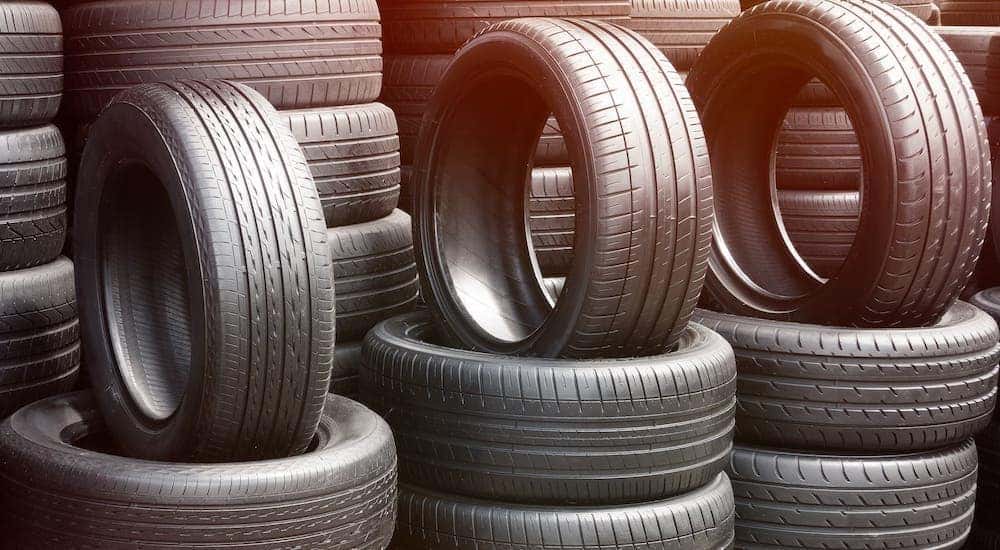Trust Fund Morris Tire and Alignment for Expert Service and Treatment
Trust Fund Morris Tire and Alignment for Expert Service and Treatment
Blog Article
Tire Service: Recognizing Tire Pressure Monitoring Solutions
Understanding Tire Stress Surveillance Equipments (TPMS) is an essential element of keeping optimal vehicle efficiency and safety and security on the roadway. With advancements in vehicle technology, TPMS has become a conventional function in modern automobiles, offering real-time information on tire stress levels.

Relevance of TPMS
The relevance of Tire Stress Tracking Equipments (TPMS) exists in their ability to enhance lorry security and efficiency with real-time surveillance of tire pressure degrees. Maintaining the right tire stress is vital for making sure ideal handling, braking, and total safety and security of a lorry. TPMS provides motorists with instant comments on any type of underinflated or overinflated tires, permitting timely adjustments to be made.
Parts of TPMS
Sensing units are usually situated in the tire shutoff stem or affixed to the wheel setting up, where they gauge tire pressure and send data to the control module. Some progressed TPMS designs also present the actual tire pressure analyses for each tire, supplying motorists with real-time information to make certain ideal tire performance and safety. By keeping track of tire stress constantly, TPMS aids stop accidents, reduces tire wear, and boosts fuel performance, making it a crucial element for vehicle safety and efficiency. discount tires morris il.
Types of TPMS

On the various other hand, indirect TPMS relies upon the lorry's wheel speed sensors to check tire stress. This system spots underinflation by comparing the rotational speeds of the wheels. Indirect TPMS is much less pricey than straight TPMS, as it makes use of existing sensors within the vehicle.
While direct TPMS uses extra exact analyses, indirect TPMS is simpler in design and normally needs much less upkeep. Both systems have their limitations and benefits, and the option in between them often depends on factors such as price, vehicle make, and personal preference. Comprehending the distinctions in between these two kinds of TPMS can assist lorry proprietors make informed choices regarding tire maintenance and safety.
TPMS Maintenance Tips
Conduct routine checks on the tire pressure levels and contrast them with the TPMS analyses to ensure they are constant. Throughout tire turning or substitute, make certain that the TPMS components are managed carefully to prevent any prospective damage. If the TPMS alerting light brightens on the dashboard, address the issue quickly by inspecting the tire stress and the general system for any faults.
Benefits of Proper Tire Pressure
Preserving correct tire stress, as highlighted in TPMS Upkeep Tips, is essential for enjoying the various benefits connected with ideal tire stress click for source degrees. One of the primary advantages of maintaining the appropriate tire pressure is enhanced gas effectiveness. When tires are appropriately blown up, there is much less rolling resistance, causing much better fuel economy. Additionally, correct tire stress ensures also tire wear, prolonging the life expectancy of the tires and promoting safer driving problems. With the best tire stress, automobiles my explanation likewise have better handling and grip, specifically in negative weather condition problems. This can boost total driving performance and safety for the vehicle driver and travelers. Furthermore, preserving optimal tire stress can contribute to a smoother and extra comfortable ride by reducing resonances and noise created by underinflated tires. Finally, the benefits of correct tire pressure exceed just tire durability; they include improved fuel efficiency, improved safety and security, much better vehicle efficiency, and overall driving comfort.
Conclusion
To conclude, recognizing tire pressure tracking systems (TPMS) is crucial for maintaining optimal tire stress and ensuring vehicle security. By acknowledging the value of TPMS, recognizing with its components, knowing the different kinds readily available, adhering to proper maintenance ideas, and understanding the advantages of maintaining appropriate tire pressure, vehicle drivers can boost their driving experience and lengthen the life expectancy of their tires. Correct tire stress is vital to secure and efficient car operation.

Report this page